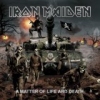Conflict-à-trois
After last week it's time for a conversation about three-ways. It's one thing to say that they are complicated, that they change the nature of the story. The first decision is always who are the three sides. Answering this helps to open up the other questions like which two sides will come together to deal with the third. That is if any of them come together. It happens most of the time, but it is not a requirement. Whether or not two side with each other one will always mess up the plans of at least one of the other two sides, if not both of them. It all comes to down to the other huge question of what are the goals of each side. The goals may be deeply ingrained in the whom of these three characters or groups. Or it may be just of matter of what they are willing, or unwilling to do.
As complicated, or straightforward, as the conflict may be there may always be a fourth matter of complication. The three-way conflict struggles in the directions afforded those possible outcomes without the affect of any outside influence. An outside influence throws the whole dynamic into a spin. Although allegiances may form and break up, or shift based on the actions of one or more of the sides, they do not shift as fast or as easily when there is an external impetus. Each party of the conflict will try to manipulate events to their advantage, but some events are adjustment proof. They can't be planned for. They may not be of help to anyone. They may even be immutable and only worked around. There are different events that can be like this.
Disasters are the first example of an immutable event that cannot be avoided. It may be used to advantage by any of the characters or groups if they can be predicted. Plans are foiled or need serious revision if an unplanned for disaster strikes. Such disasters could be weather related, seismic, or even smaller scale such as a fire. Depending on the setting and pre-planning a disaster might even be a weapon in one side's arsenal. This is especially true of fire, bombings, avalanches, and the like. Of course even false indications of such a disaster can be a tool to use. Fake bombs or threats, false tidal wave warnings, or even pulling a fire alarm throw a wrench into someone's plans. As almost always, the possibilities are endless.
Mood: feisty.
Music: Porno Star by Motley Crue and Slick Black Cadillac by Quiet Riot.
 Or get MP3s. | Buy these at Amazon.com Click Images to Buy CDs |  Or get MP3s. |
Labels: complications, conflict, consequences, disaster, goals, manipulation, plans, setting, story


![Various: Transformers: The Movie [Extra Tracks]](http://www.batteredspleenproductions.com/rmtp/reviews/images/transfrmr.jpg)







